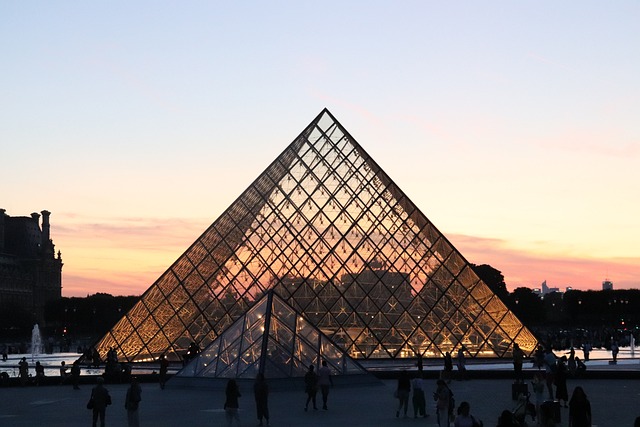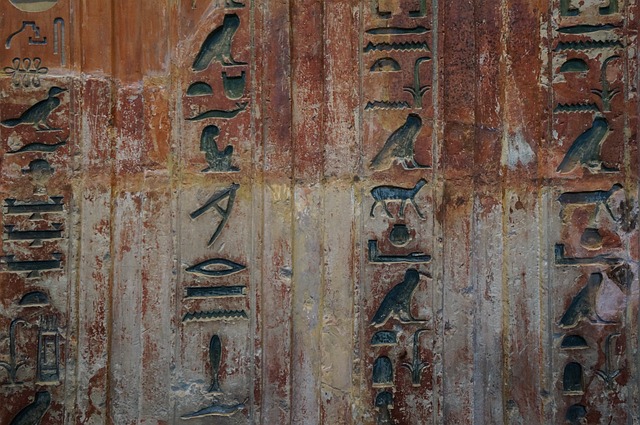The Ultimate Traveler’s Handbook to Must-See Museums
Traveling is not just about visiting new places; it’s about immersing yourself in the history, culture, and art that define each destination. Museums stand as the treasure troves of human expression, offering insight into our shared past and aspirations for the future. In this ultimate traveler’s handbook, we will explore some of the must-see museums around the globe, highlighting what makes each one special and essential for any traveler’s itinerary.
The Louvre, Paris, France
The Louvre is not only one of the world’s largest museums but also a historic monument in its own right. Originally built as a fort in the late 12th century, it has evolved into a sprawling museum housing over 380,000 artifacts. Among its most famous treasures are Leonardo da Vinci’s Mona Lisa, the ancient Greek statue Venus de Milo, and the Winged Victory of Samothrace.
Visitors can easily spend a full day wandering its galleries, marveling at masterpieces from various cultures and epochs. To enhance your experience, consider joining a guided tour that focuses on specific themes or collections, ensuring you don’t miss out on the Louvre’s hidden gems.
The British Museum, London, England
The British Museum, founded in 1753, boasts a collection that spans over two million years of history. From the Rosetta Stone to the Elgin Marbles, this museum provides insights into civilization through objects of art and history from cultures across the globe. The museum’s architecture, including its stunning Great Court with a glass roof, creates an awe-inspiring backdrop for its exhibits.
One of the highlights of a visit is the Egyptian gallery, featuring mummies and ancient artifacts. Don’t forget to check out the museum’s latest exhibitions, which often showcase temporary displays that delve deeper into specific cultures or historical events.
Known affectionately as “The Met,” this museum is an iconic New York City destination with over two million works in its collection. Spanning 5,000 years of art from every corner of the world, The Met is divided into several departments, including European Paintings, Egyptian Art, and Costume Institute. The museum’s rooftop garden offers stunning views of Central Park, making it a perfect spot for relaxation amidst your exploration.
The museum also hosts a variety of special exhibitions throughout the year, providing additional compelling reasons to visit multiple times. Be sure to indulge in the museum’s onsite dining options, which offer a range of culinary fusions.
Uffizi Gallery, Florence, Italy
For art lovers, the Uffizi Gallery in Florence is a dream come true. This museum is home to the world’s most significant collection of Renaissance art, featuring masterpieces by Botticelli, Michelangelo, and da Vinci. The Uffizi, located in a stunning architectural structure designed by Giorgio Vasari in the 16th century, allows visitors to step back in time as they stroll through its rooms filled with artwork.
One of the main attractions is Botticelli’s The Birth of Venus, which encapsulates the beauty and ethos of the Renaissance. As Florence itself is often considered the birthplace of this movement, visiting the Uffizi provides contextual appreciation of the art surrounding you.
National Gallery, Washington, D.C., USA
The National Gallery of Art in Washington, D.C. is separated into two buildings—the West Building, which focuses on Western art from the Middle Ages to the 1800s, including works by Van Gogh and Monet, and the East Building, which is dedicated to modern and contemporary art. This museum stands out not just for its collection but also for its striking architecture, especially the glass dome of the East Building.
The gallery offers a range of programs, including lectures and guided tours, making it accessible and educational for visitors of all levels. A stroll through the sculpture gardens surrounding the museum enhances the experience, allowing you to connect with art amid nature.
The Hermitage Museum, St. Petersburg, Russia
Housed in the stunning Winter Palace, the Hermitage is one of the largest and oldest museums in the world. Founded in 1764 by Catherine the Great, it contains over three million items. With its opulent architecture and extensive collection ranging from ancient artifacts to Impressionist paintings, every corner of the Hermitage tells a story.
Art lovers will be particularly enchanted by the Impressionist and Post-Impressionist galleries. The museum’s layout encourages exploration, with grand staircases and ornate salons leading visitors through a rich narrative of art history.
Rijksmuseum, Amsterdam, Netherlands
The Rijksmuseum is a national museum dedicated to arts and history in Amsterdam. Its collection includes masterpieces of Dutch Golden Age painters such as Rembrandt and Vermeer. The most famous piece, The Night Watch, is a must-see for any visitor. The museum’s recent renovation has created a more engaging experience, featuring cutting-edge technology that allows for interactive learning.
Outside, the museum gardens and surrounding areas are perfect for a leisurely stroll, blending art with the lively atmosphere of Amsterdam.
Tokyo National Museum, Tokyo, Japan
The Tokyo National Museum is the oldest and largest museum in Japan, showcasing a vast collection of art and antiquities from Japan and other Asian countries. The museum’s architecture itself embodies a blend of traditional Japanese and modern styles, making it a focal point of Ueno Park.
While the highlights include samurai swords, traditional kimonos, and ancient ceramics, the museum also regularly hosts temporary exhibitions that broaden the understanding of Asian art and culture. Additionally, the museum’s tranquil garden offers a space for reflection after a day of exploration.
The Vatican Museums, Vatican City
The Vatican Museums house one of the most remarkable collections of art in the world, collected by the Popes over centuries. Notable for its stunning Sistine Chapel, featuring Michelangelo’s frescoes, the museum complex is a blend of art, history, and spirituality. This extensive collection ranges from ancient Roman sculptures to contemporary religious art.
The Vatican Museums are known for long lines, so planning your visit, including booking tickets in advance, is essential. Consider joining a guided tour that provides deeper insights into the artwork and history of the Vatican.
Conclusion
Exploring museums offers a chance to connect deeply with diverse cultures and histories, enriching your travel experience. Each museum mentioned in this guide presents a unique opportunity to dive into the artistry and stories that shape our world. Whether you’re an avid art enthusiast or a casual traveler, these museums will leave a lasting impression, making the effort to visit them truly worthwhile. Pack your bags, grab your camera, and prepare for a journey through time, creativity, and human expression.


